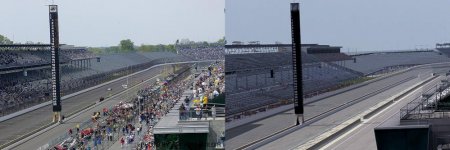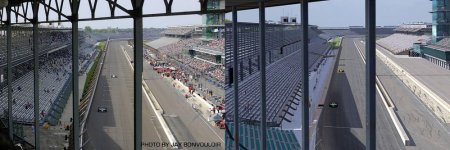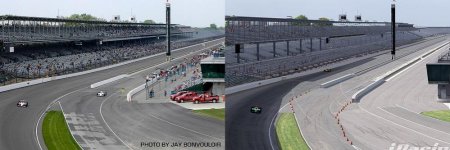iRacing.com Motorsport Simulations check it out
You are using an out of date browser. It may not display this or other websites correctly.
You should upgrade or use an alternative browser.
You should upgrade or use an alternative browser.
iRacing.com Motorsport Simulations
- Thread starter Bram Hengeveld
- Start date
- Status
- Not open for further replies.
Yeah... I was racing 4 series at the start of this season and then I realized I was not having that much fun, but lots of headaches! I was not able to be competitive enough in any of the series and I was often losing iRating and SR with very bad races.The average iRacer competes in about 1.8 series. A few drivers do up to 5 series, but that's a ton. It's like competing in 5 leagues. Lot's of practice is required each week to be competitive, so even if you did purchase all the content, you probably would use all of it for quite a long long time.
Then I focused only in 2 series (Corvette and Mazda) and I got really good results after that. I think for my tight schedule, 2 series is the most I can have.
Abdul Al-Amry
2011 RD Indy 500 Winner
Interesting topic. zretil I feel your pain. iRacing should aswell. Maybe introduce a redeem code scheme. Someone or myself could then buy the code and sent it to you. You can then send money transfer like western union etc etc.
Good news, visa credit card is now available in our country , I shall receive it in next 48 hours ,haha finaly can't wait to do my 1st purchase "That will be iracing of course" 
see you on track soon .
ps: didin't find how to mark this thread as "Resolved " , can a forum moderator do it please
see you on track soon .
ps: didin't find how to mark this thread as "Resolved " , can a forum moderator do it please
Of course! Happy purchasing buddy!
Sim Throttle Response Curves Explained
iRacing just release their new build to rave reviews on the forums. One of the changes was the throttle response curves for all the cars. It's been a very subtle, but fantastic change, but understanding exactly what happened is tricky.
Here's Grant Reeves explanation...
==========================
The old throttle response curve was a simple y = x^2, which was done like a million billion years ago, way before I ever arrived at Papyrus in 98 and no one has ever thought to go back and look at it. We would know for all those cars we've modelled for the last 15-20 years what the full throttle dyno curve looks like, and what the off throttle engine braking looks like, but how the engine responds in between those two extremes I guess was never realized to be quite an important driving characteristic.
I believe the original logic was that y=x^2 approximates the shape of a 1-cosine curve from 0 to 90 degrees which was supposed to vaguely model the opening of the butterfly valve in the throttle body (but in my mind I'd expect that the butterfly valve opening would be better modelled with a sine curve than 1-cosine, and that would have been a far better match to the actual response)
The new throttle response curves are based on several sets of real vehicle data. One of the cars we model even has dyno information for full rpm pulls at every 10% of throttle position. By comparing how the engine power at any given rpm varies with throttle application I came up with an approximating function that sort of looks like the average of all the data we have.
At very small throttle openings, the airflow is pretty much choked to a fixed amount, so regardless of engine rpm it's only getting a fixed amount of air to burn for power output. Thus the initial (first 10-15% or so) throttle response regardless of rpm is kind of proportional to power output.
But at full throttle, the power output is limited by how much air the engine can pump. At low rpms the engine can't flow much air so it very quickly saturates it's power output, which is why at low rpm you feel like you're getting 80-90% of engine power by 40-50% of throttle, and the rest of the throttle travel feels very unresponsive. But at high rpm the motor can pump a whole lot of air, so the power output keeps increasing the further you get into the throttle.
Eventually you start running into limitations of how much air the throttle body can flow when wide open, and into limitations of the engine's volumetric efficiency at pumping air at very high rpm, which causes the throttle response to still flatten off as you get towards 80-90% even at max rpm.
It's quite likely that every engine in existance has subtley difference throttle response based on various build characteristics, but we're just giving them all the same response curve for now based on what their rev limit is.
First time I tried the new curves - like most of you guys have noticed - it immediately felt incredibly more natural - even the Spec Racer (which I like to call a Death Trap) was suddenly a whole lot more controllable and drivable. So, yeah, it does seem that it's pretty important to model what happens in between 0% and 100%.
========================
When iRacing decides to update something they really put a lot of thought into it. I can't wait to see their new transmission model they're set to release in the next 30 days.
Great stuff!
iRacing just release their new build to rave reviews on the forums. One of the changes was the throttle response curves for all the cars. It's been a very subtle, but fantastic change, but understanding exactly what happened is tricky.
Here's Grant Reeves explanation...
==========================
The old throttle response curve was a simple y = x^2, which was done like a million billion years ago, way before I ever arrived at Papyrus in 98 and no one has ever thought to go back and look at it. We would know for all those cars we've modelled for the last 15-20 years what the full throttle dyno curve looks like, and what the off throttle engine braking looks like, but how the engine responds in between those two extremes I guess was never realized to be quite an important driving characteristic.
I believe the original logic was that y=x^2 approximates the shape of a 1-cosine curve from 0 to 90 degrees which was supposed to vaguely model the opening of the butterfly valve in the throttle body (but in my mind I'd expect that the butterfly valve opening would be better modelled with a sine curve than 1-cosine, and that would have been a far better match to the actual response)
The new throttle response curves are based on several sets of real vehicle data. One of the cars we model even has dyno information for full rpm pulls at every 10% of throttle position. By comparing how the engine power at any given rpm varies with throttle application I came up with an approximating function that sort of looks like the average of all the data we have.
At very small throttle openings, the airflow is pretty much choked to a fixed amount, so regardless of engine rpm it's only getting a fixed amount of air to burn for power output. Thus the initial (first 10-15% or so) throttle response regardless of rpm is kind of proportional to power output.
But at full throttle, the power output is limited by how much air the engine can pump. At low rpms the engine can't flow much air so it very quickly saturates it's power output, which is why at low rpm you feel like you're getting 80-90% of engine power by 40-50% of throttle, and the rest of the throttle travel feels very unresponsive. But at high rpm the motor can pump a whole lot of air, so the power output keeps increasing the further you get into the throttle.
Eventually you start running into limitations of how much air the throttle body can flow when wide open, and into limitations of the engine's volumetric efficiency at pumping air at very high rpm, which causes the throttle response to still flatten off as you get towards 80-90% even at max rpm.
It's quite likely that every engine in existance has subtley difference throttle response based on various build characteristics, but we're just giving them all the same response curve for now based on what their rev limit is.
First time I tried the new curves - like most of you guys have noticed - it immediately felt incredibly more natural - even the Spec Racer (which I like to call a Death Trap) was suddenly a whole lot more controllable and drivable. So, yeah, it does seem that it's pretty important to model what happens in between 0% and 100%.
========================
When iRacing decides to update something they really put a lot of thought into it. I can't wait to see their new transmission model they're set to release in the next 30 days.
Great stuff!
2 great cars! But why a class D and a class B car? How are you gonna jump from D to B without getting a C car?Just buy SKippy and C6.
Yeah, this was easy before the fast track. Now, when you get above 4.0, you automaticaly go the next class, but in this case below 4.0 because of the change and you're gonna be able to race the B class, in this case. Unless he races up to 4.0 with a rookie car, so he doesn't race his MPR and then can go above 4.0 until 4.99 and then change class and get C above 4.0 right on...
Kevin Ascher
#47 Roaring Pipes Maniacs
Nice post jack ;-)
Do we have any info on how the new transmission model will look like yet?
Do we have any info on how the new transmission model will look like yet?
Nice post jack ;-)
Do we have any info on how the new transmission model will look like yet?
Thanks Kevin. Nope, but if they put that much thought into what stepping on the throttle does, then I'm confident the transmission model will be pretty cool and different for each car. I'm guessing it will be out in 30 days based upon their hints. Hope so.
Jamie's Garage
Getting used to working with iR's skinning peculiarities:



Getting used to working with iR's skinning peculiarities:



Bruce Saltzman
Premium
Most of the cars felt immediately better. The one that threw me a curve was the Dallara. That will take some getting used to and requires, apparently, a throttle input as though there is an egg between your foot and the accelerator.
Nice, looks even better on the Jetta than on the Toledo 
Marcel Hulsbergen
#111 | Roaring Pipes Maniacs
Just buy SKippy and C6.
Riley also aboard, my new tracks: Mosport, Virginia, Watkins, Road America, Road Atlanta, Sebring, Silverstone, Daytona. My wallet hurts much and for sure no new content before April or May
Now you're talking... It's just a bit sad that the Riley is not a series with much attendence... Lets go for the 2.4h, shall we!?!?! 
- Status
- Not open for further replies.
Latest News
-
Racing Club Schedule: November 17 - 24A new week means a new set of events in our Racing Club. Here's what's on tap from November 17...
- Yannik Haustein
- Updated:
- 3 min read
-
Macau Grand Prix in Sim Racing: Deserving of More?This weekend is the Macau Grand Prix and whilst a shadow of its former self, this tight street...
- Angus Martin
- Updated:
- 3 min read
-
How One Announcement Quadrupled Forza Horizon 4's Player BaseIt is exactly one month until Forza Horizon 4 will no longer be available to purchase online...
- Angus Martin
- Updated:
- 2 min read
-
Assetto Corsa EVO New Car Configurator In The PipelineAfter this year's sim Racing Expo, the excitement around Assetto Corsa EVO has continued to...
- Connor Minniss
- Updated:
- 2 min read
-
Steering Wheel Showdown: Which Wheel Would You Like A Sim Racing Version Of?Sim racers have plenty of choice when it comes to hardware. There are a number of cool steering...
- Yannik Haustein
- Updated:
- 2 min read
-
Gran Turismo 7: Yamauchi Teases New Cars For Update 1.53It is that time again when Gran Turismo series producer Kazunori Yamauchi teases us with an...
- Luca Munro
- Updated:
- 5 min read
-
Automobilista 2: Incoming DLC Will Have Free Trial PeriodWith the big v1.6 update, plenty of new content is coming to Automobilista 2. Players who are on...
- Yannik Haustein
- Updated:
- 2 min read





















